ARAGUAR
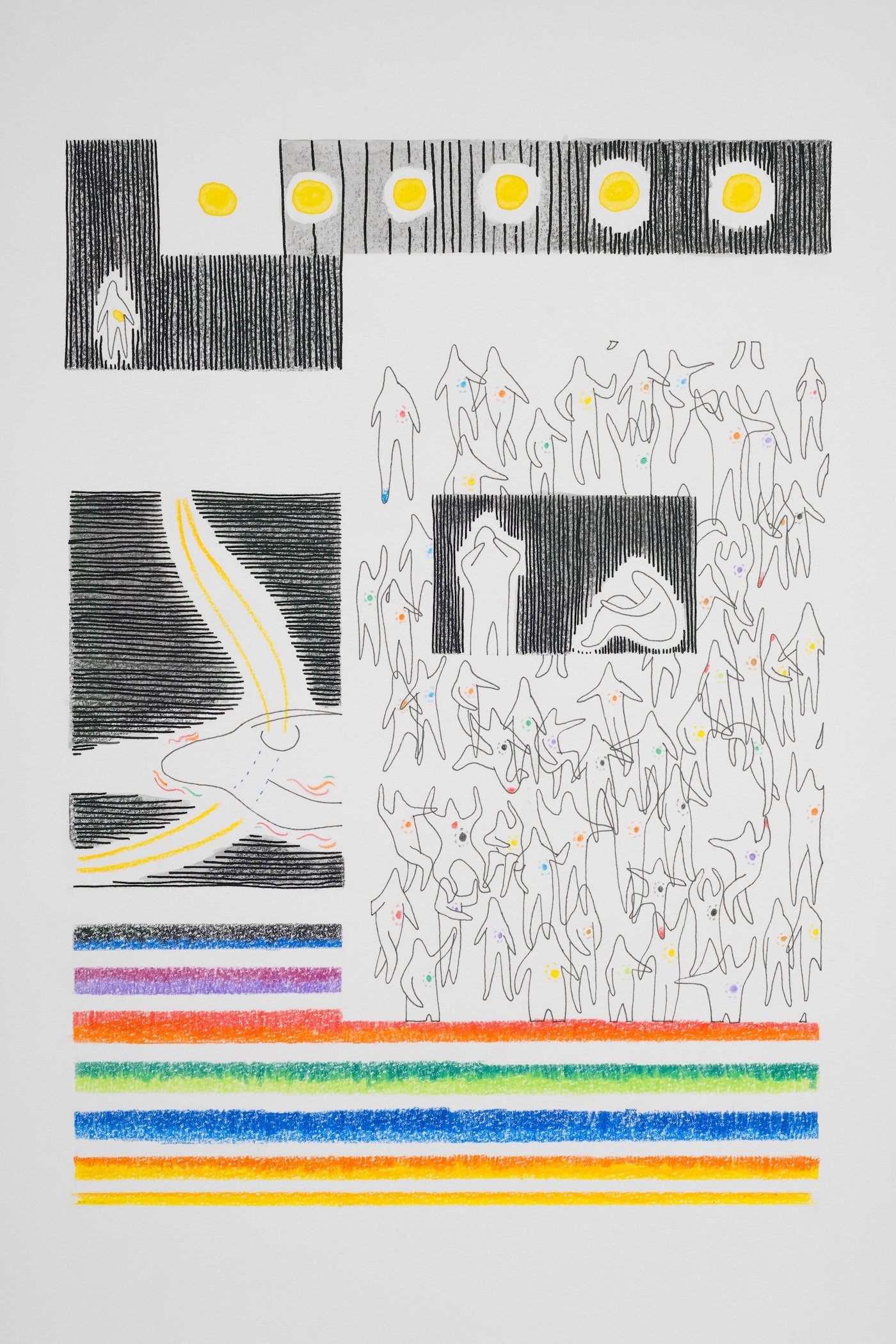
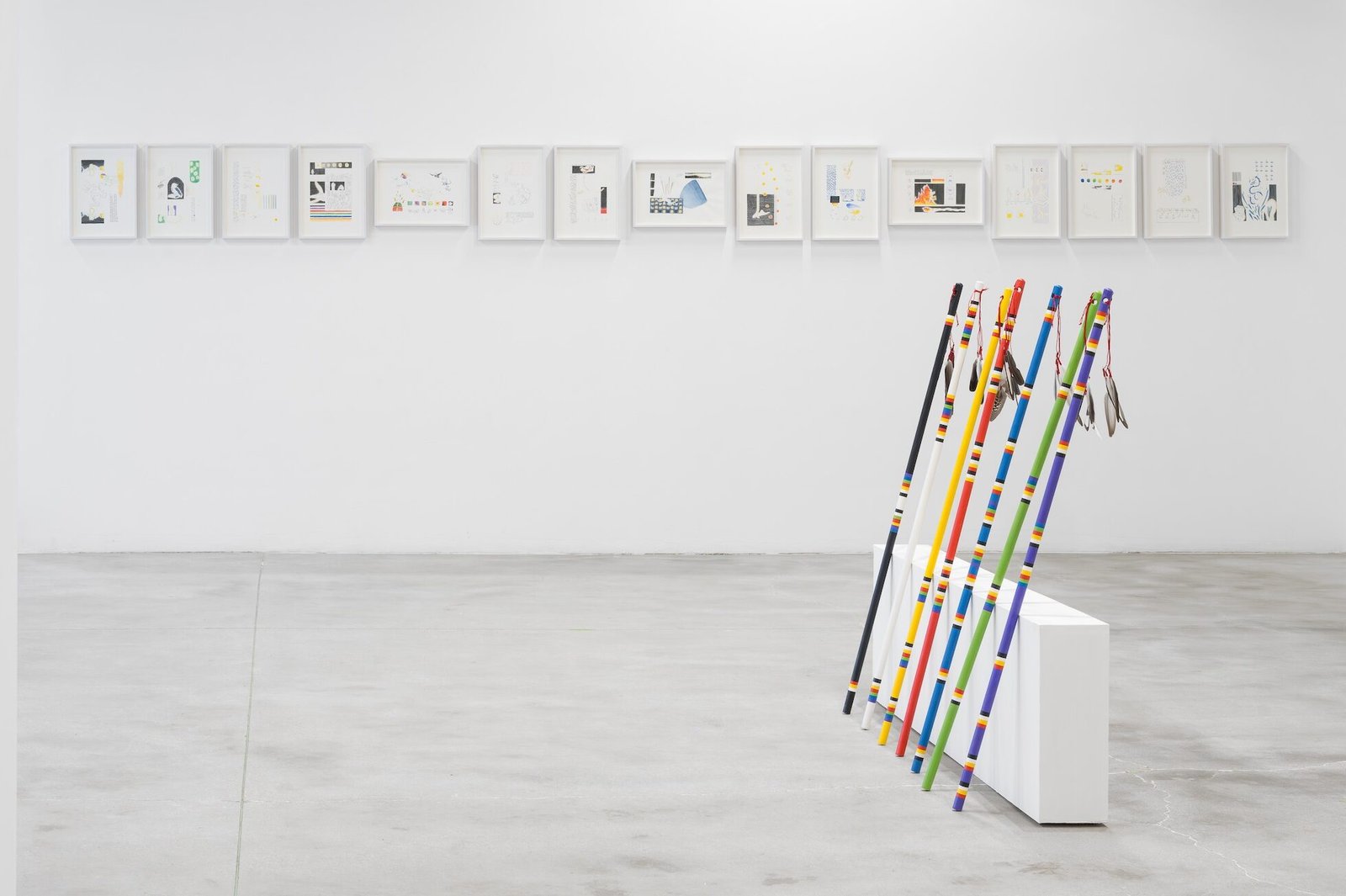
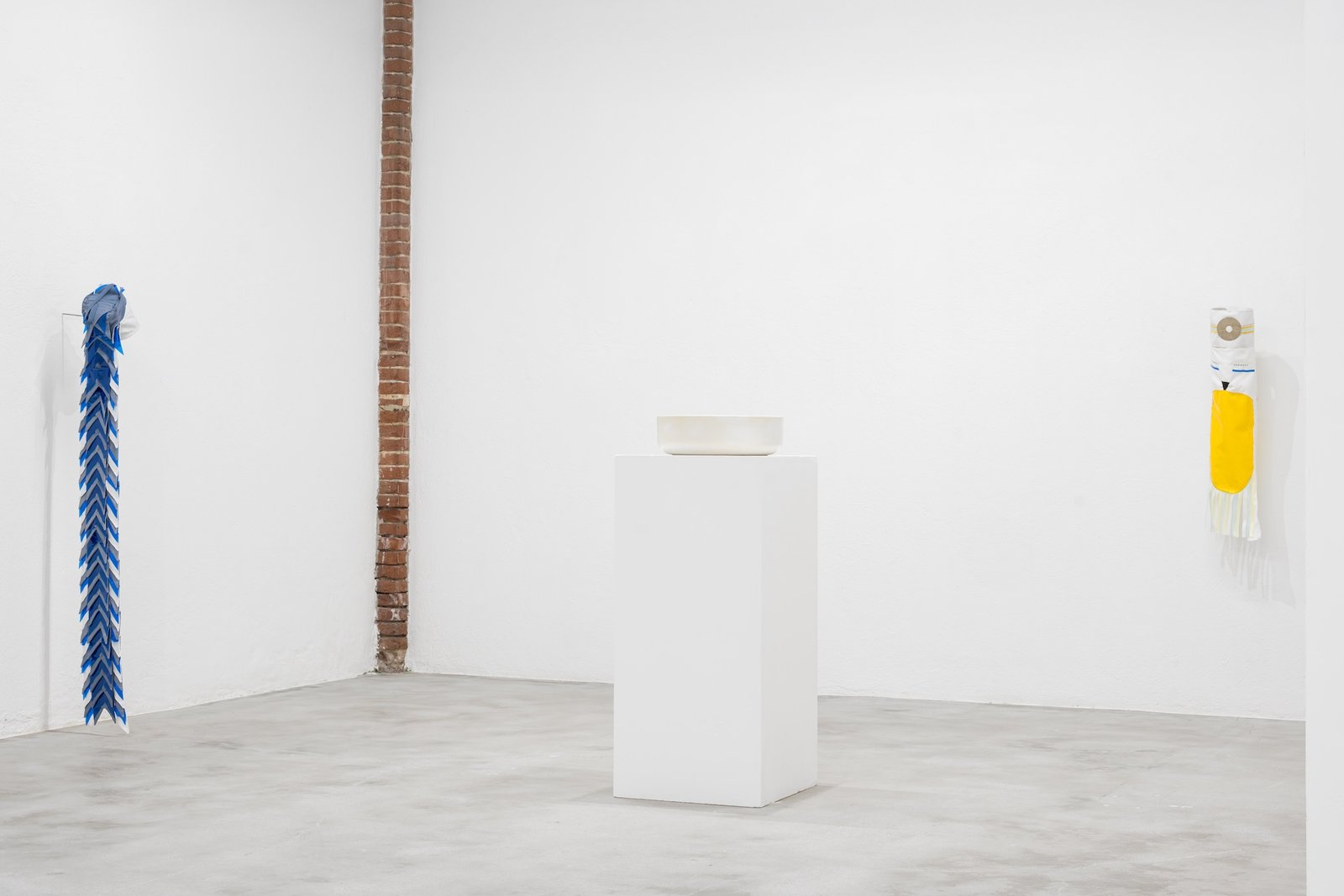
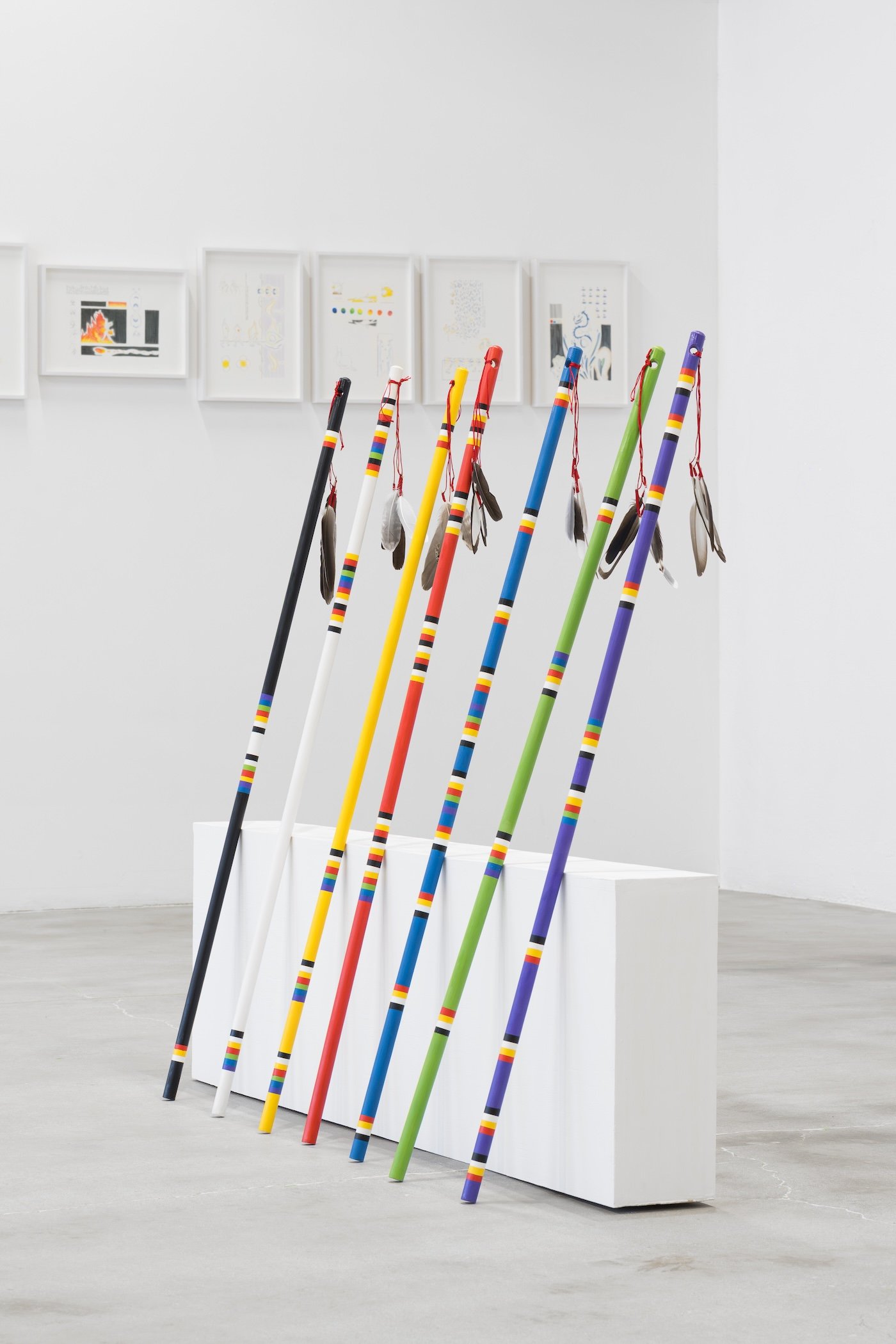
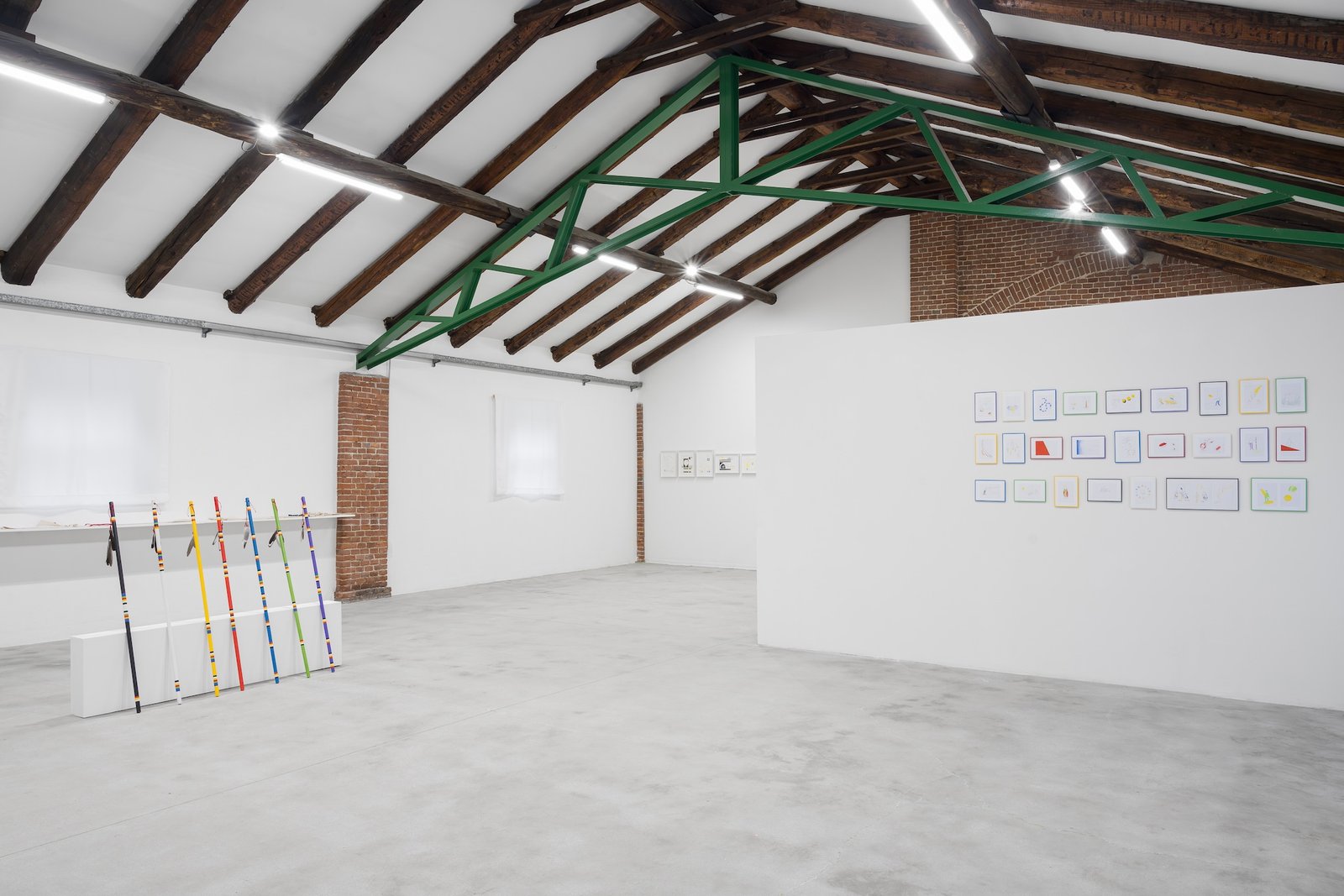
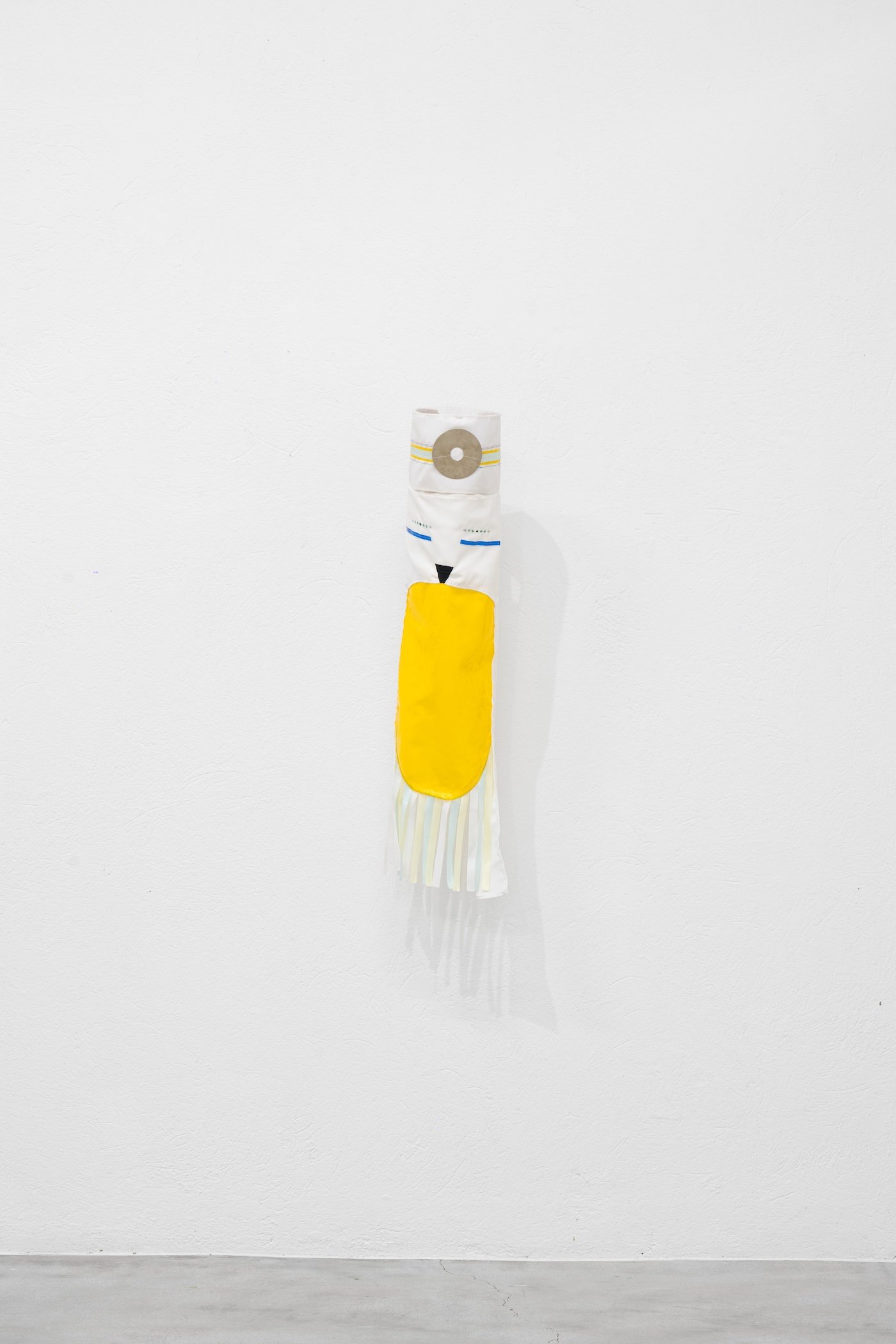
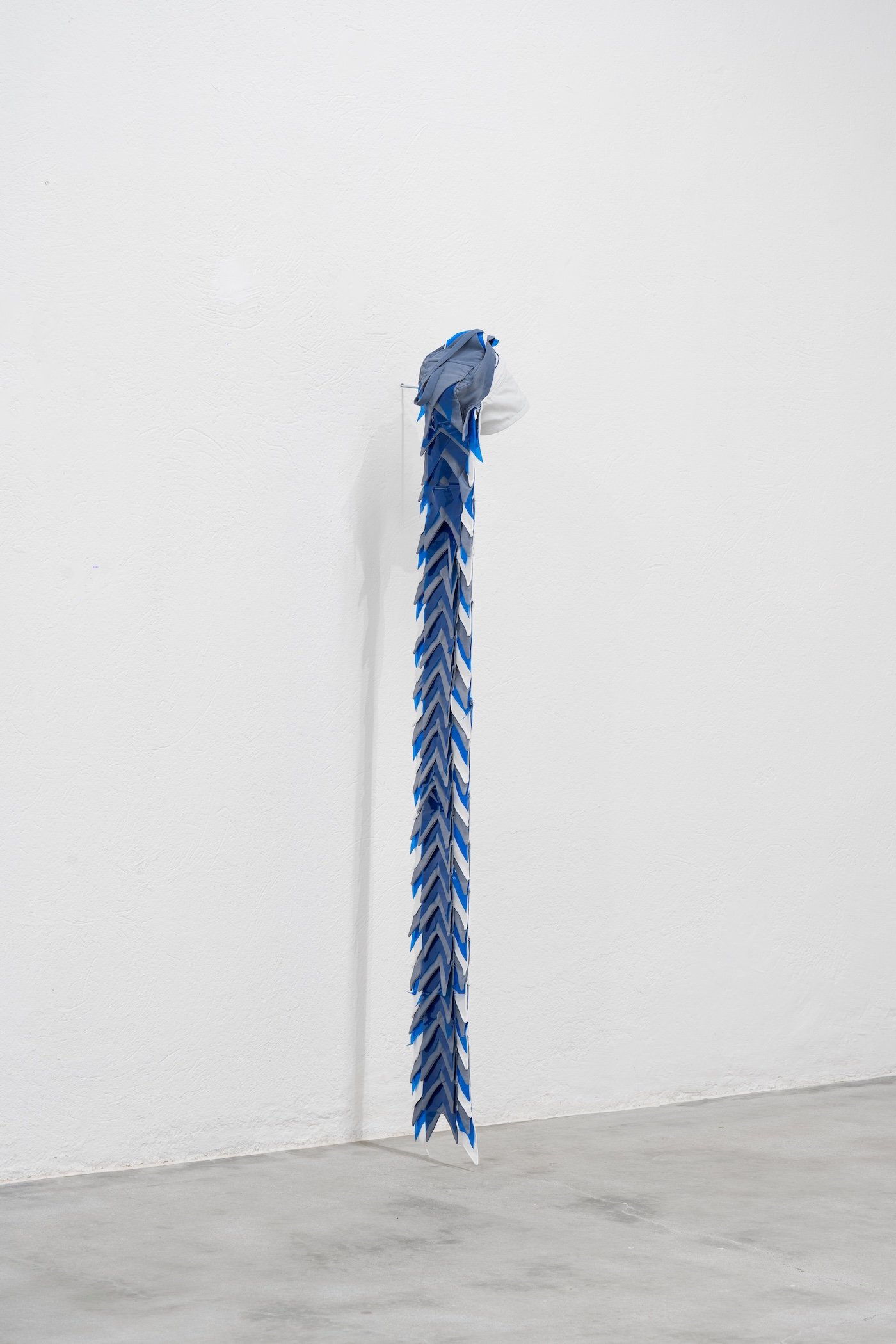
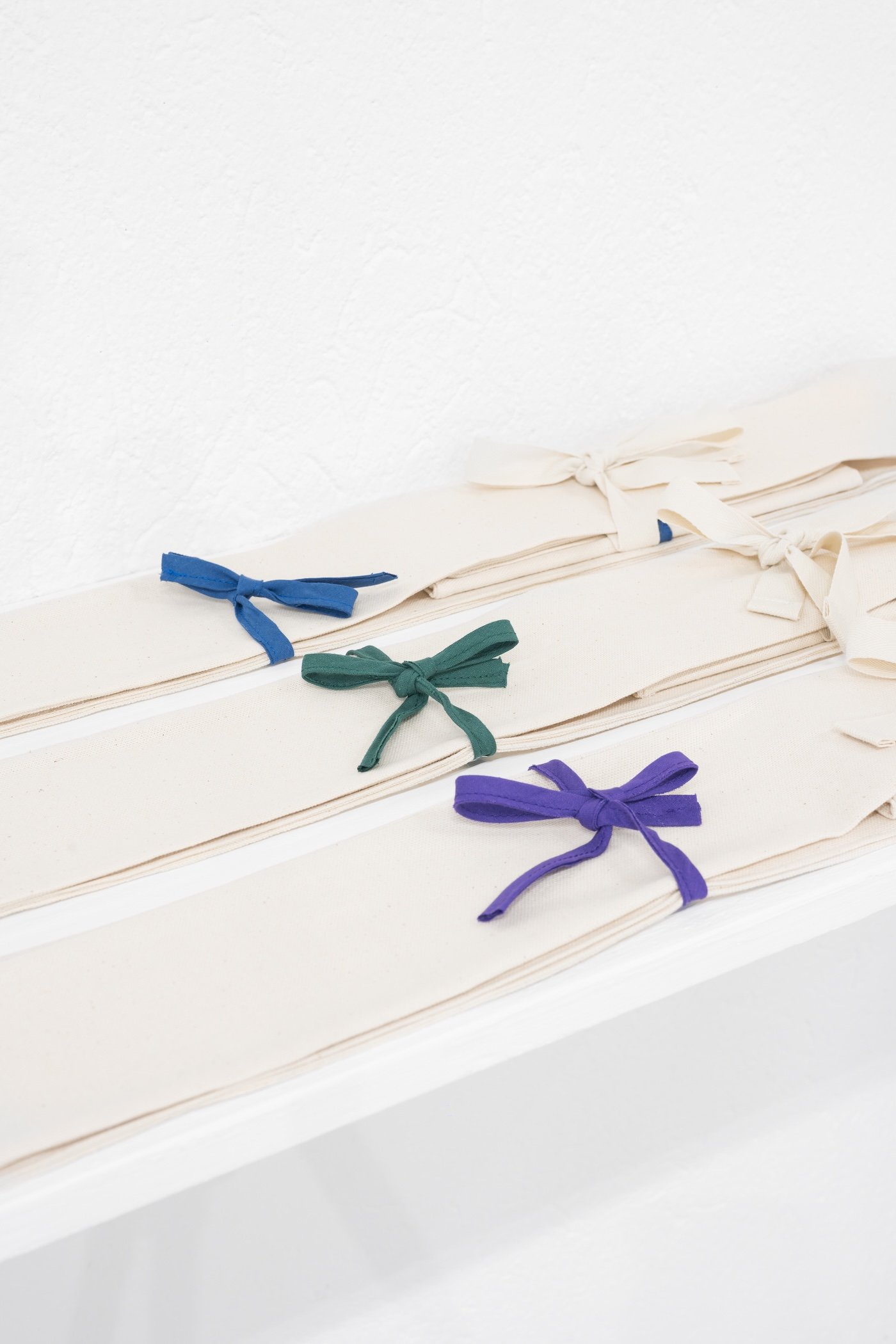
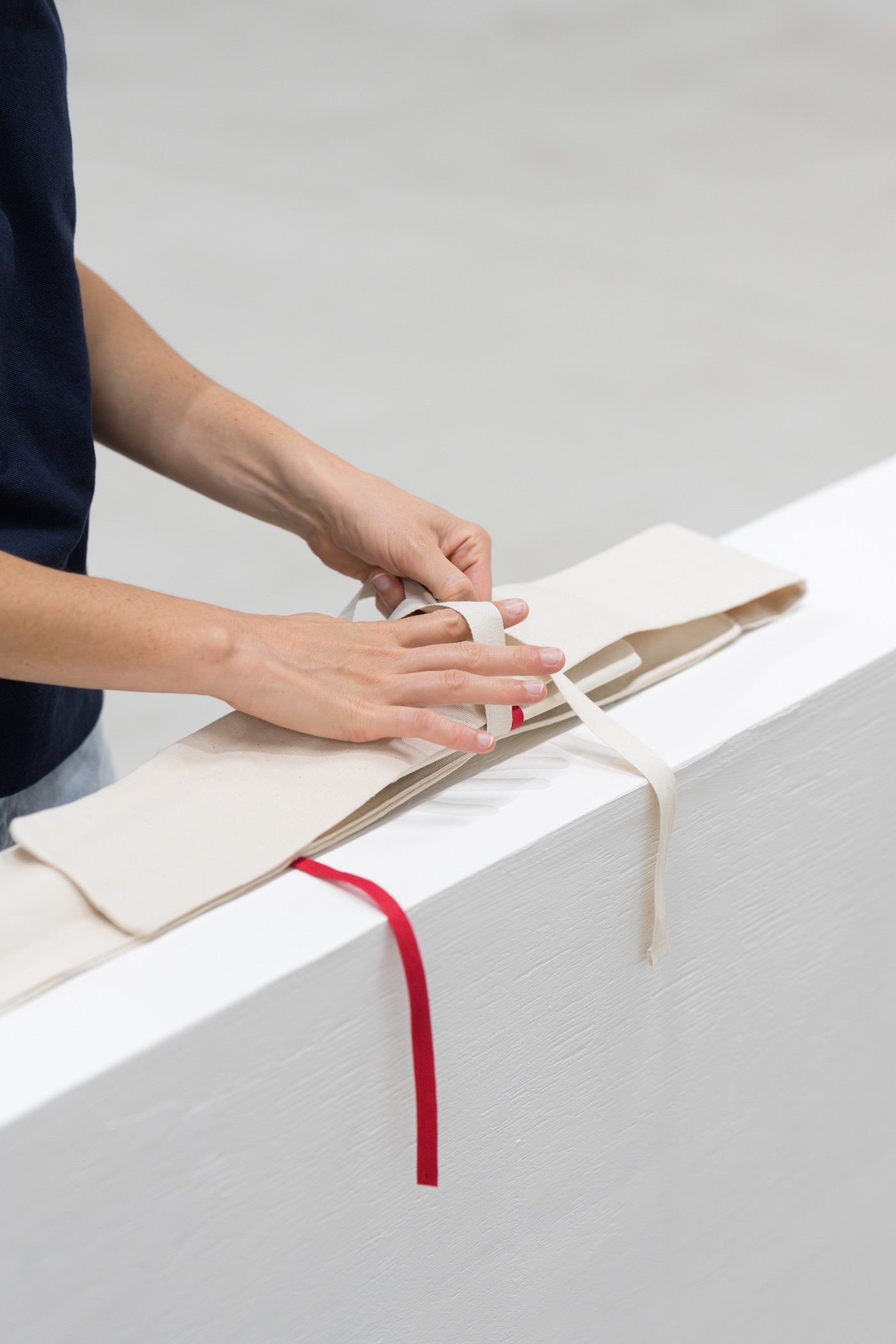
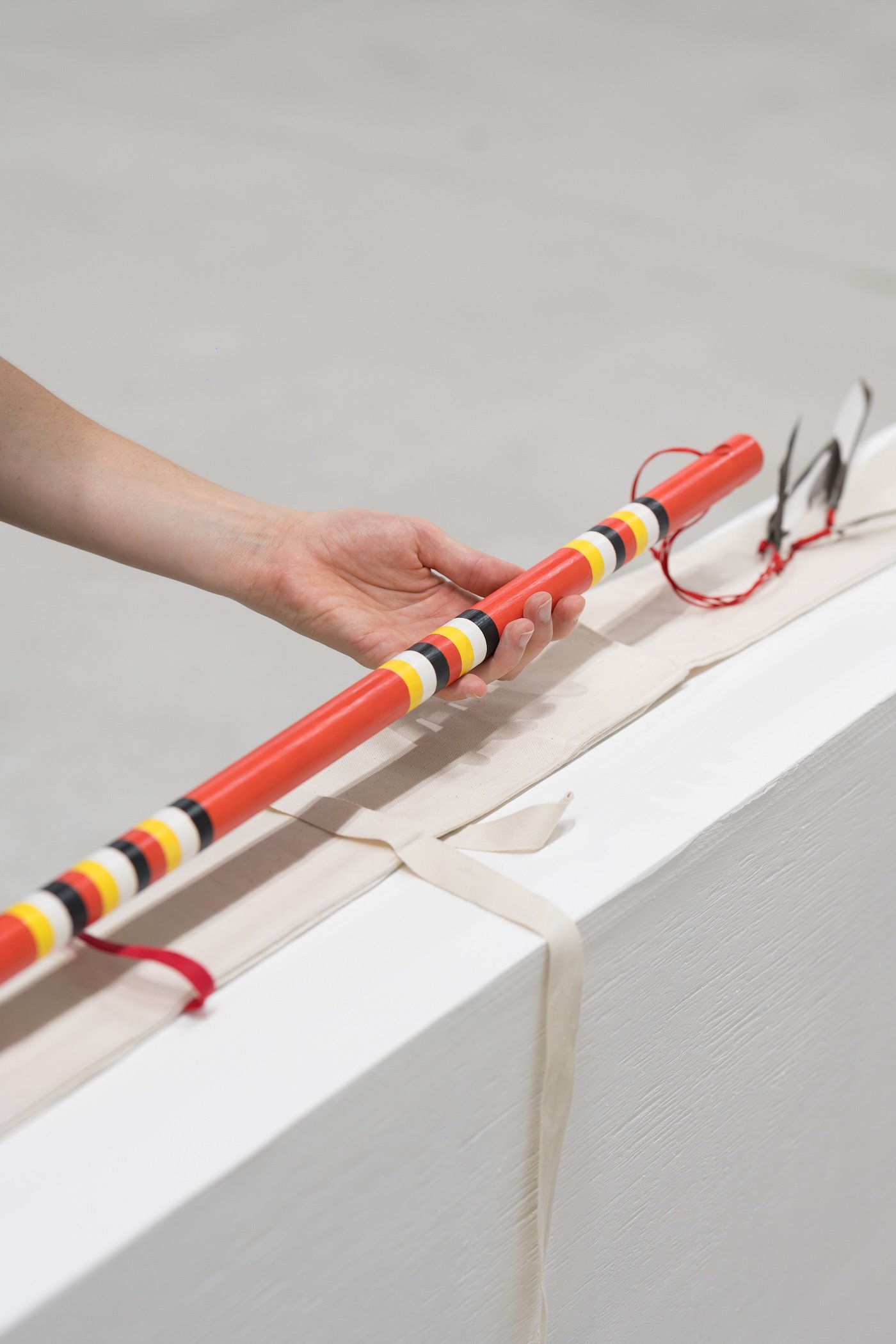
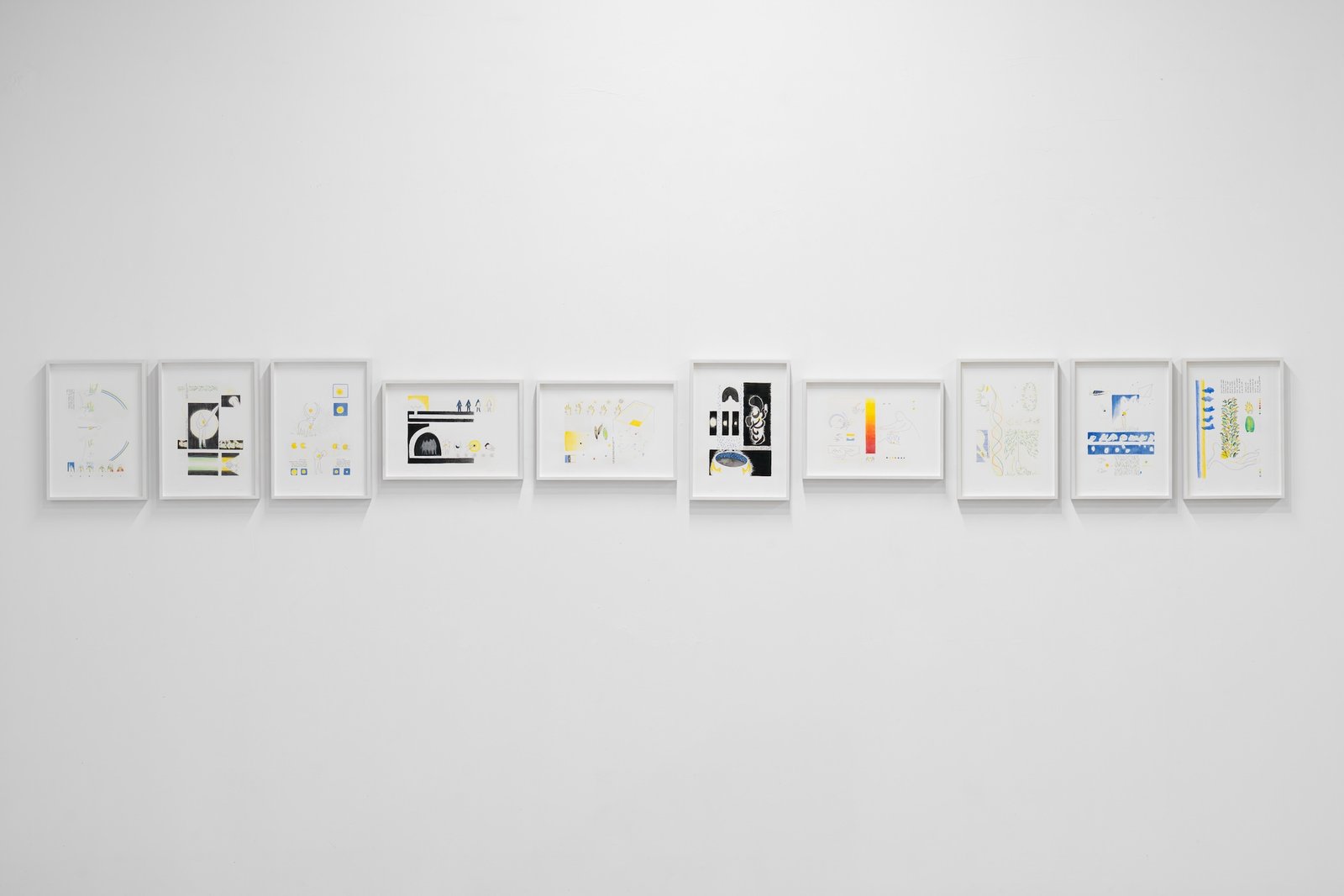
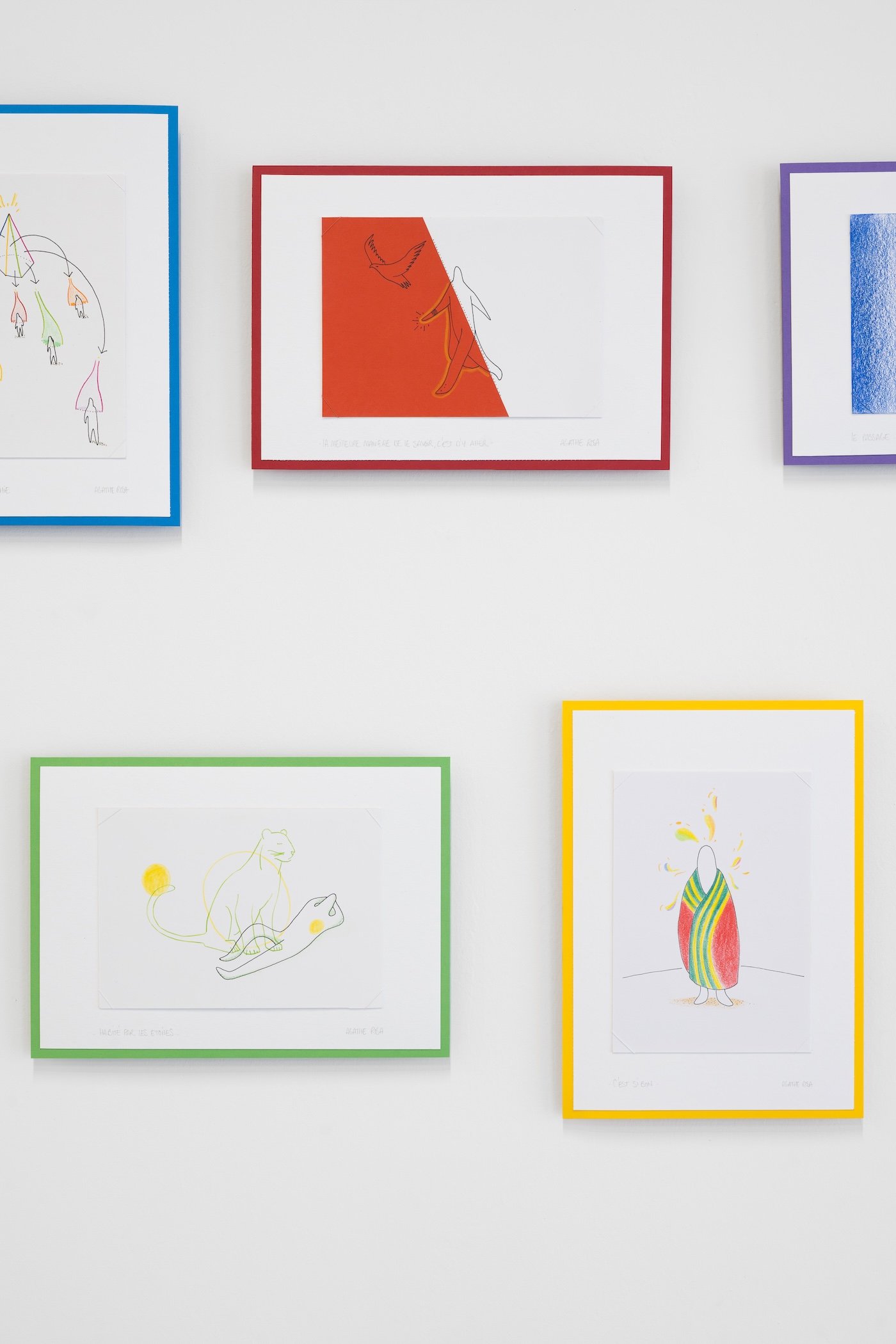
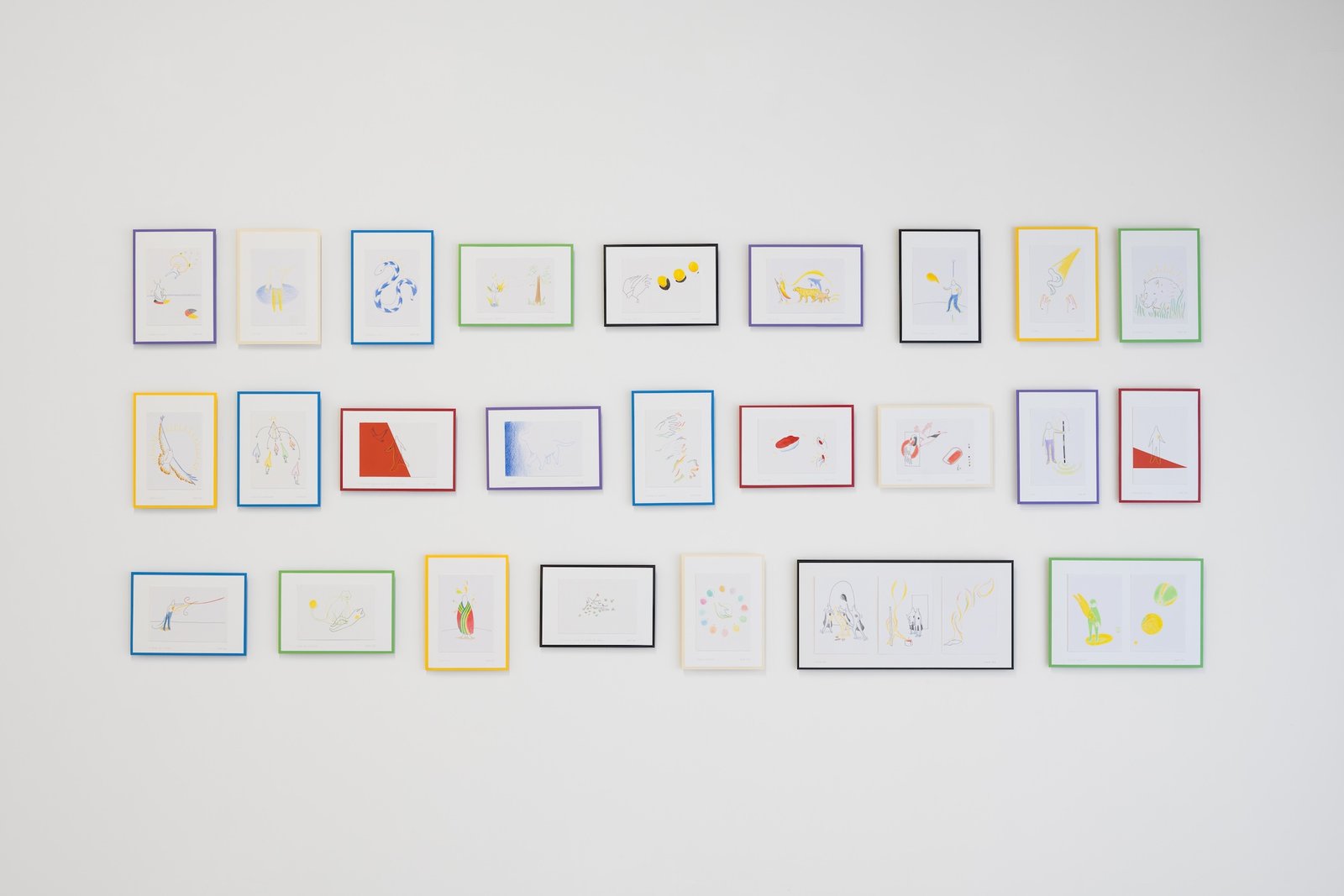
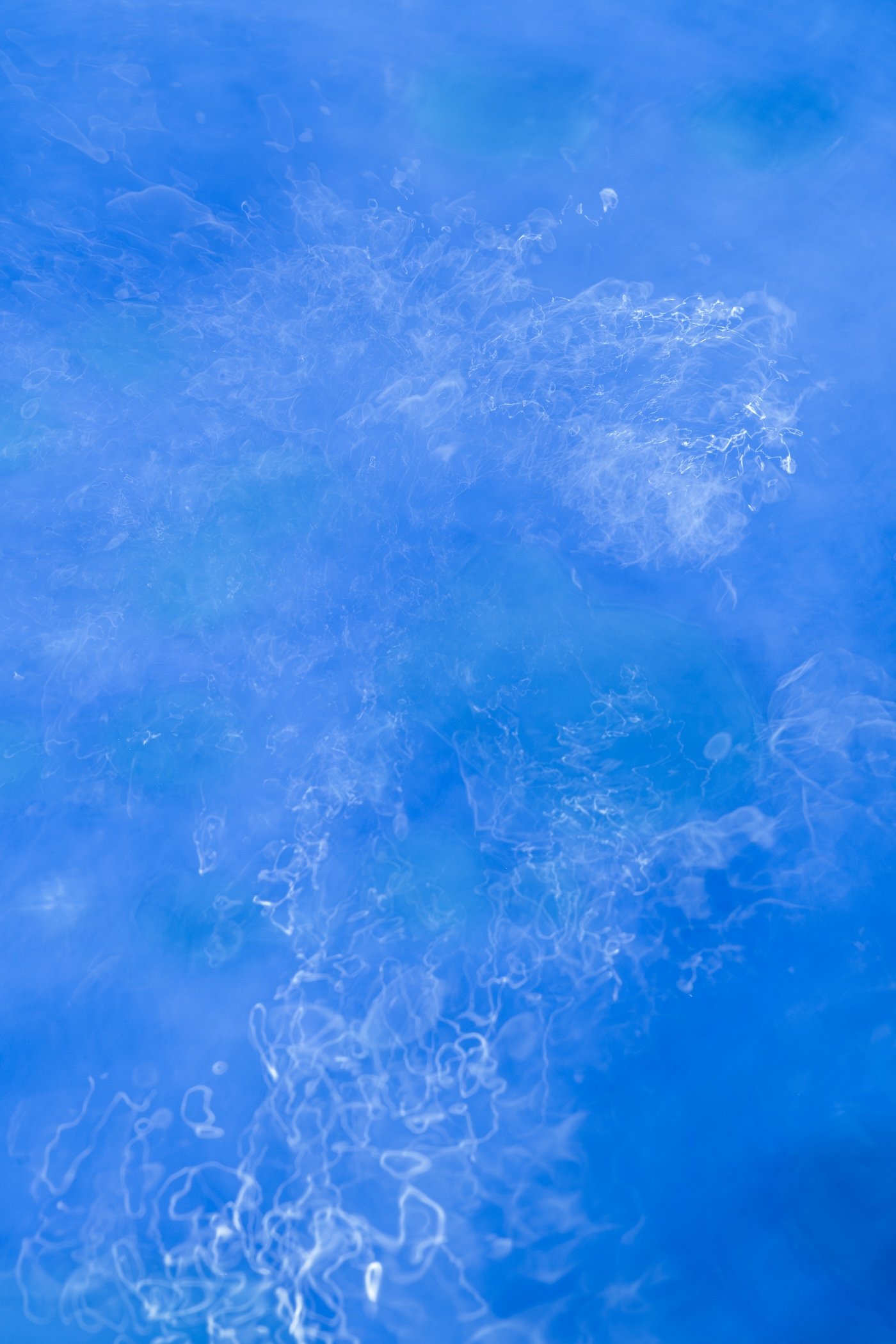
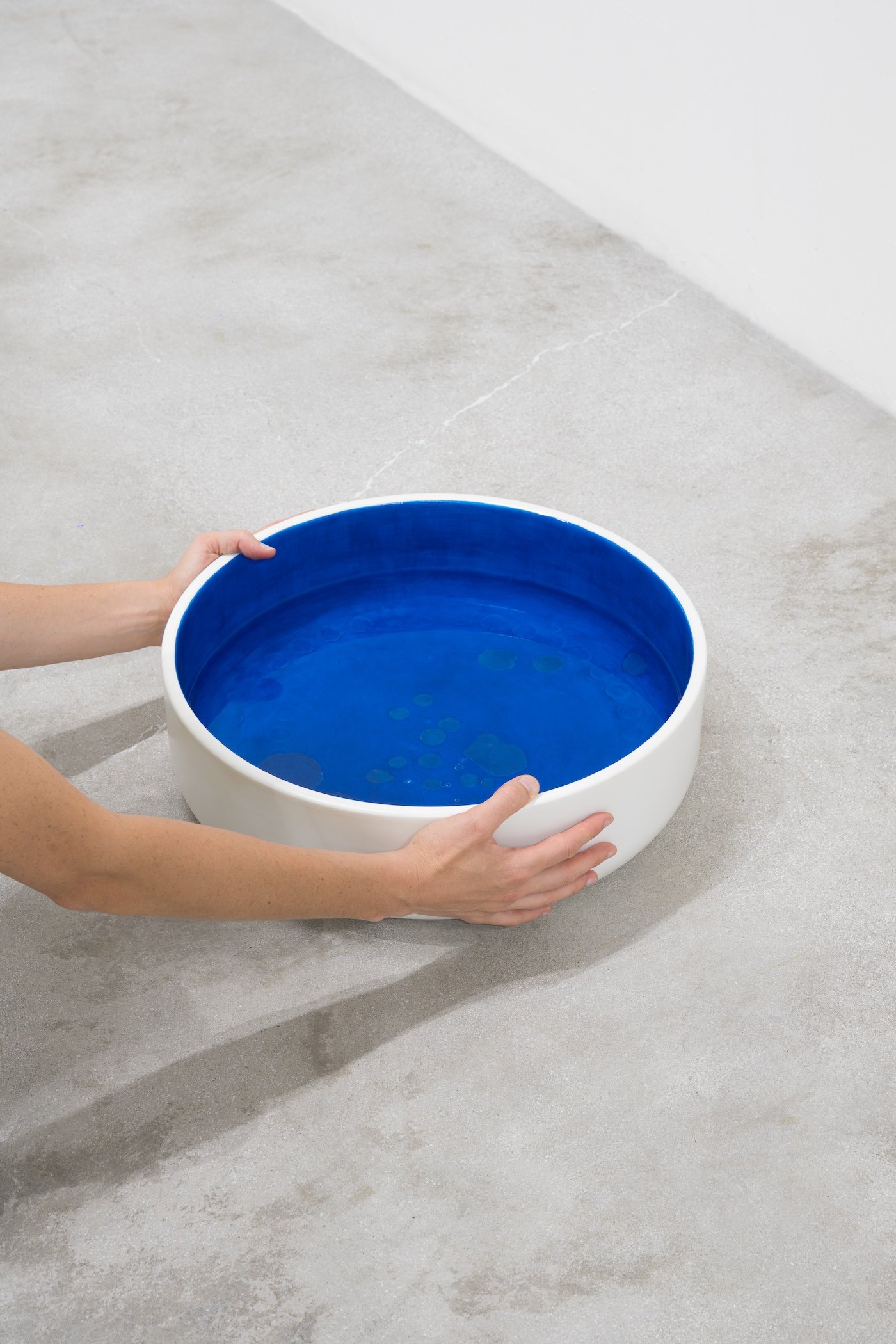
Critic text by GIULIA DE GIORGI
Opening Sunday 14 September | 16 September – 19 October 2025
For her first solo exhibition at Société Interludio, Agathe Rosa creates an experiential environment, a place to be traversed. The time and space created by the artist in the exhibition are not linear: past, present, and future coexist, as do here and elsewhere, in a spiral movement.
Araguar is an act of sharing by Agathe, declaring the inevitability of the integration between her life and her artistic production. In this sense, each stage of the journey is a gift from the artist to the visitor, and each passage reflects the indissoluble link between the two spheres. Starting from an intimate experience, the exhibition radiates into the space like a layered narrative that invites careful reading.
Experience—which is nourished by contemplation—is one of the fundamental aspects of Agathe’s practice, together with the perception of light, air, and the invisible structures that constitute the reality that surrounds us and which, through her works, are revealed, becoming matter. Installations, videos, sculptures, and photographs are useful tools for creating—in the artist’s words—“situations that invite another rhythm and another frequency,” “in which the observer can become an active participant and in which each encounter allows us to change our relationship with the world.”
Beyond the veil that marks the beginning of the journey, the works created by Agathe over the last five years are displayed. The word Araguar—which appeared to the artist during a dream—introduces the dreamlike dimension that permeates the exhibition and marks the beginning of a journey that takes place beyond this diaphragm. In the exhibition, the distinction between container and content fades: the walls of the gallery are no longer visible, one enters an environment of light and contemplation. The journey undertaken by the artist in recent years becomes a journey for the visitor.
Once across the threshold, drawings are distributed on the walls—the matrix from which the three-dimensionality of the exhibition takes shape: thus on paper are found the feathers, creatures, shapes, and colors that are encountered in the sculptures, the codes that run through the works.
Created in ink, watercolor, and pencil, the drawings are animated by a universe of human and non-human figures, geometric and architectural structures, directions and flows, environments and atmospheres, states of consciousness. Faithful transcriptions of the artist’s dreams, visions, and experiences, they are reflections of scenes in which no mark is accidental.
The large‑scale drawings accommodate a multiplicity of images in a meticulous compositional balance: their complexity requires the observer’s eye to take an in-depth journey. Accompanying them with short texts—notes or descriptions—the artist arranges the images without suggesting a sequence. In this lack of hierarchy, different moments share the same plane and multiple readings. The small-format drawings, on the other hand, are swift, immediate: each one contains a single element, allowing for a single interpretation and reflecting the characteristics of intuitive thinking.
Developed from the Carnet series, begun by Agathe in 2016, the drawings on display conquer the white sheet with delicate yet decisive strokes. They are characterized by pulsating presences, dense beyond their apparent slenderness. The inevitable coexistence of light and shadow, lightness and depth, harmony and chaos, is addressed by the artist with grace and balance. Each drawing is both a precise passage of the story unfolding on the walls and a stage in a process that extends beyond the confines of the gallery: the space-time of the exhibition projects the viewer into other places, opening doors to infinite possibilities for pathways, whether evocative, familiar, or indecipherable.
The sculptures on display are the materialization and amplification of the drawings on the walls.
Les 7 Vents consists of seven sticks, made by the artist from wood with a specific sequence of colours1. Each of the sticks, which can be handled according to pre-established instructions, represents a direction, according to one of the Native American spiritual traditions: West, North, East, South, Sky, Earth, Center. At the top of each stick is a bird feather representing the quality of the air blowing in different directions. The seven sticks, or junctions, or even—extending to further levels of meaning—the seven stages of an initiatory journey, declare themselves to be elements endowed with intrinsic energy.
Le Serpent d’eau and Le Jaguar are made from everyday materials and, by evoking two creatures from Native American mythology, draw attention to what lives around us: the non-human, often relegated to the margins in Western culture2. They are masks to be worn, accompanied by a sequence of precise gestures. They are part of a series inaugurated by the artist in 2020 with Être ciel, a cloak that transposes the space above us onto fabric and, once worn, allows us to identify with the sky. The masks allow the wearer to become a moving representation and embodiment of the qualities attributed to the creatures whose likeness they assume.
Murmure: the intense blue ceramic vessel is filled with water collected by the artist according to the phases of the lunar cycle. The glazed surface retains traces of the firing process: the cracks and fissures, resembling tears, refer to the alternation of vulnerability and resistance, both of the material and of the soul. The viewer’s gaze is drawn into the iridescent reflections, and the work is thus activated, becoming a mirror and a place for inner dialogue. A clear, healing, and purifying source, the basin is a moon, a mirror, a circle: the circularity of the entire exhibition converges here.
The sticks, masks, and basin are ritual units, significant for their mere presence and at the same time endowed with acting force. They are gateways that lead to an experiential dimension, transcending simple contemplation and triggering the act of perception starting from the narrative prepared by the artist.
With Araguar, Agathe Rosa traces an alphabet composed of archetypal signs and symbols that take shape starting from a two-dimensional plane. It is the alphabet of a universal language, visionary yet accessible, which becomes an instrument of knowledge and individual and collective transformation. The observer—here a guest in a dimension between journey and dream, an explorer of the boundary between the visible and the invisible—is invited by the artist to rethink their perception, to reactivate their imagination and to trace the beauty of reality in its most intangible manifestations and its most imperceptible structures.
*Agathe Rosa* (Annecy, 1987) explores the relationship between natural light, living beings, and territories.
By questioning the potential of “luminous matter,” she draws on cognitive processes—perception, sensation, memory, representation—to challenge our experience of space and time.
Through photography, drawing, sculpture, installation, sound, video, and textiles, she creates poetic systems in which matter becomes movement and light reveals the fragile, subtle architecture of reality.
Her works make visible the invisible forces that shape our world: air, light, silence, movement. Time slows down, space expands, and the infinite emerges from the ordinary. Her practice invites a contemplative and sensorial experience, resonating with contemporary ecological and philosophical concerns.
After graduating with honors from the National School of Architecture of Marseille in 2011, she left construction to transform concrete into the ephemeral.
Her work has been exhibited internationally in institutions such as the Italian Cultural Institute (Manifesta 13 – Marseille), CNES–La Chartreuse (Avignon), Museo Helio Oiticica (Rio de Janeiro), Centre Pompidou (Paris), Museo Santa Maria della Scala (Siena), and Galleria d’arte contemporanea Raffaele De Grada (San Gimignano).
For ten years, she also taught Representation Techniques and Visual Arts at ENSA Marseille, while participating in numerous seminars bridging art and architecture.

